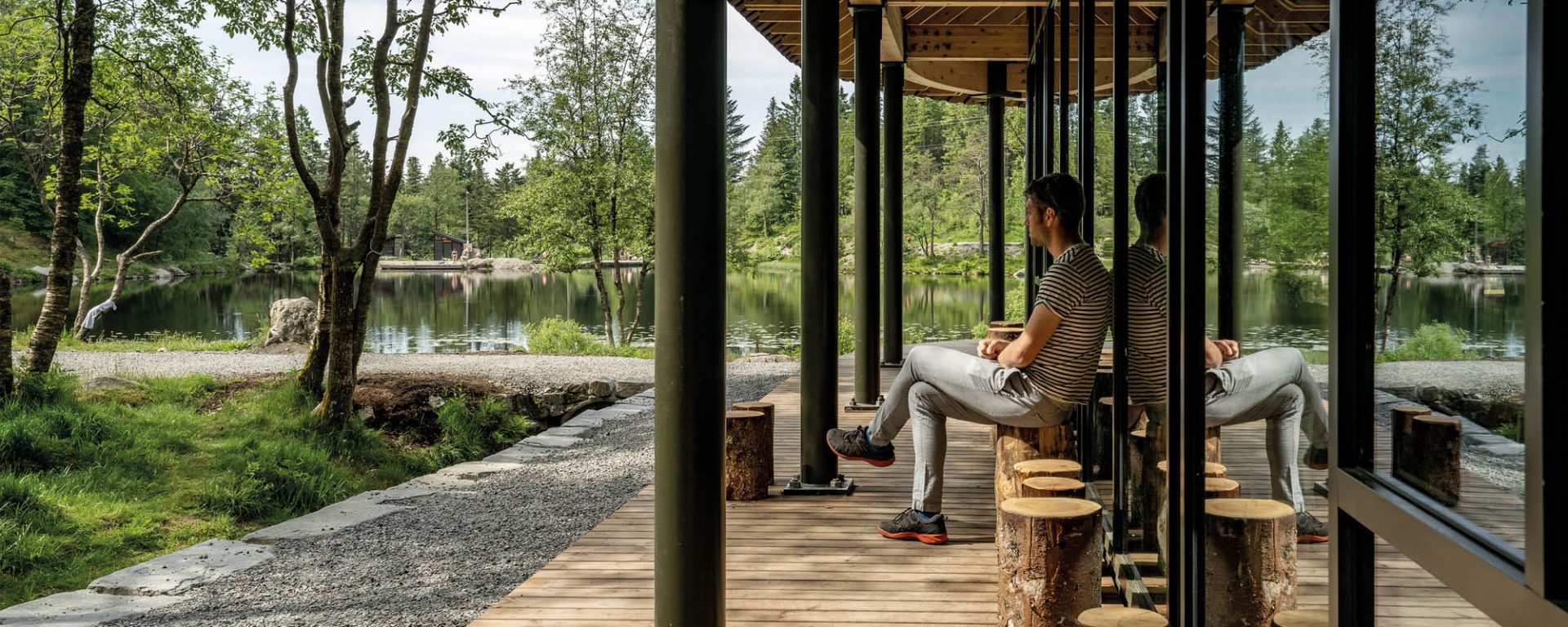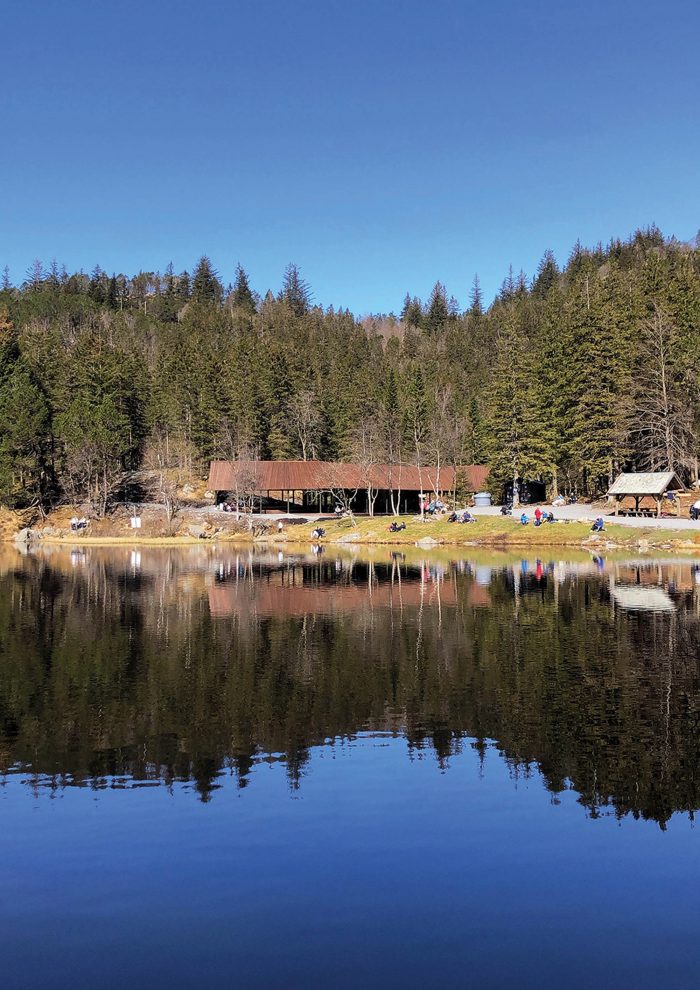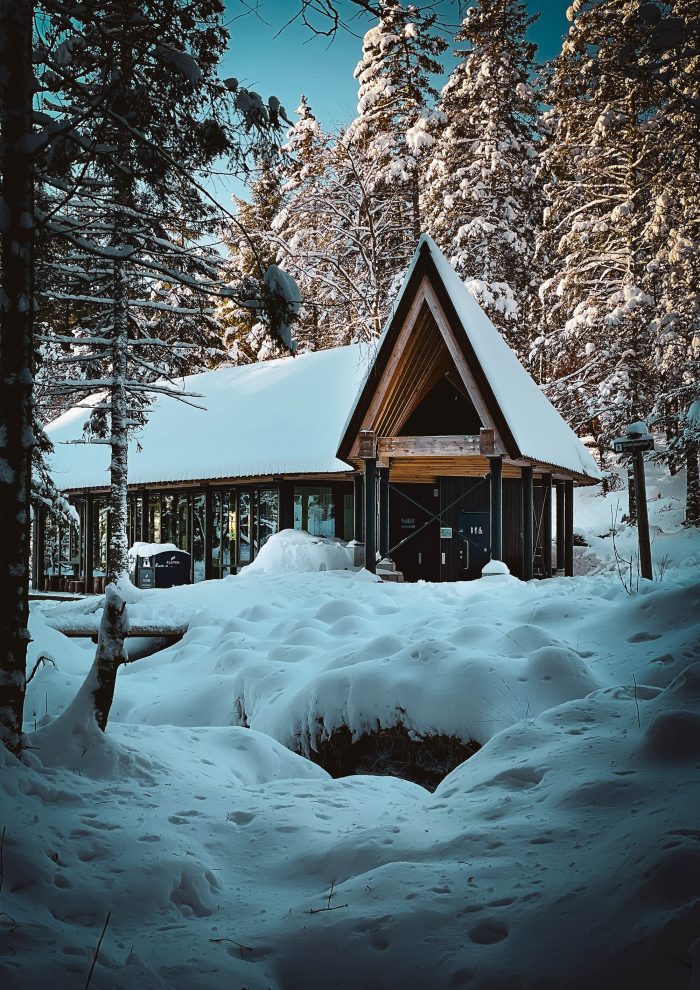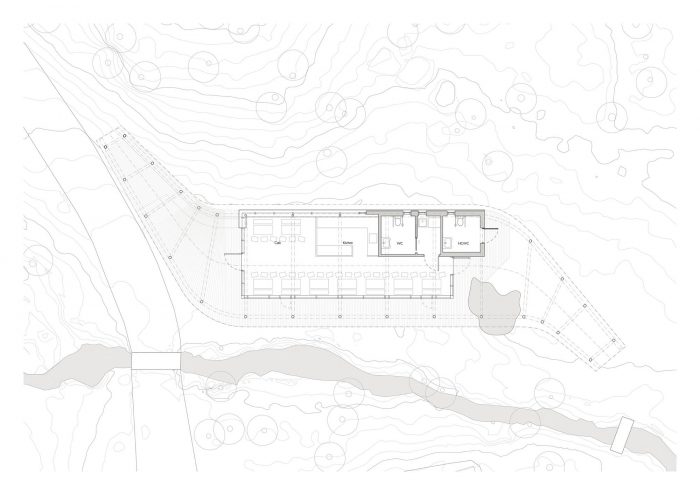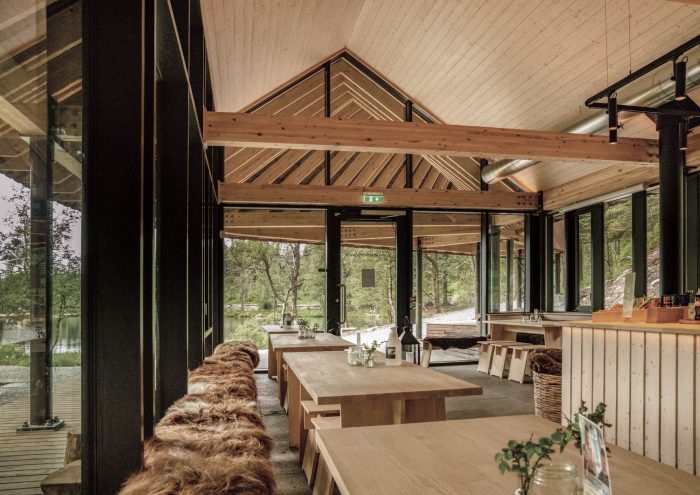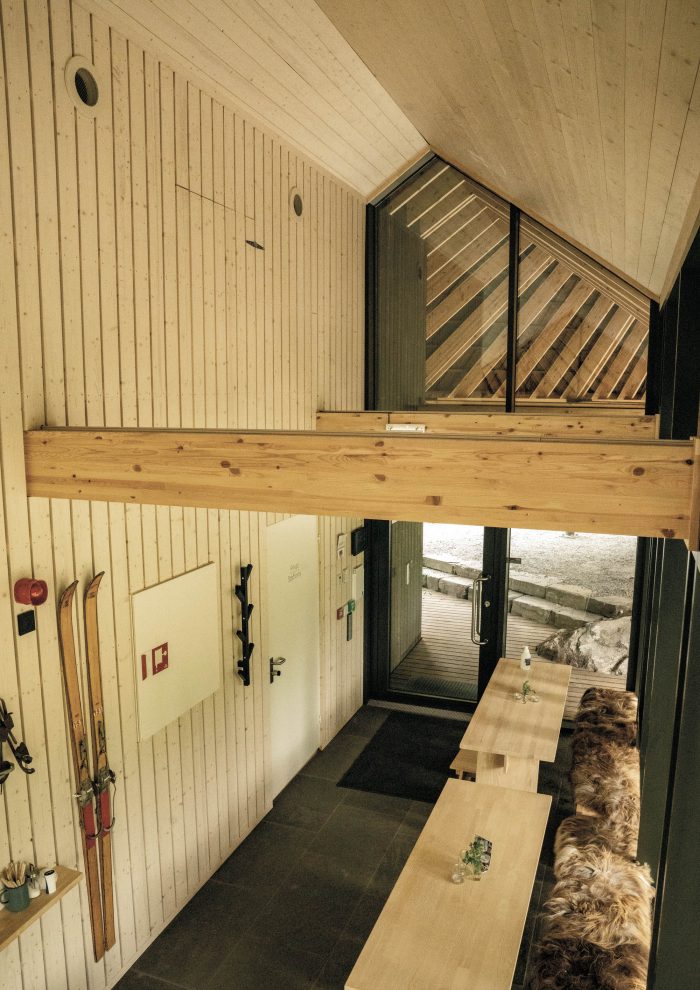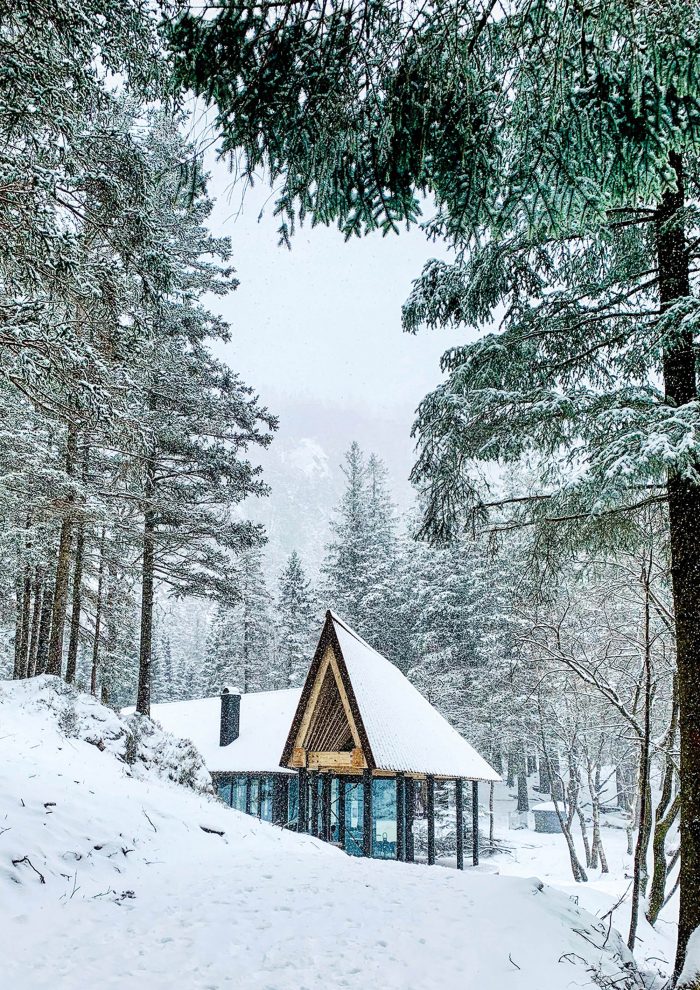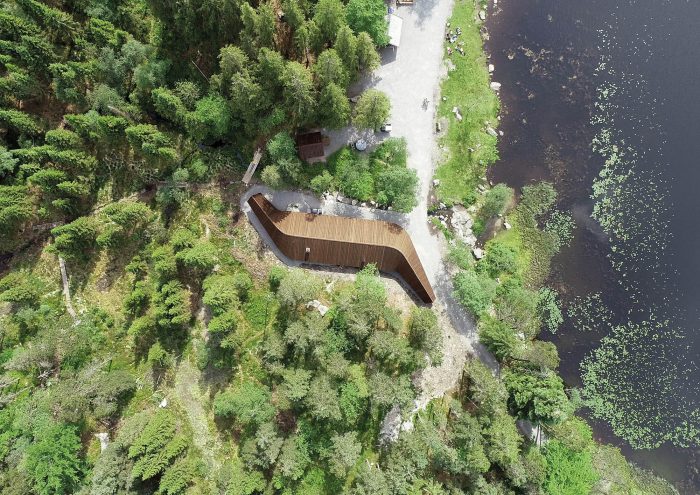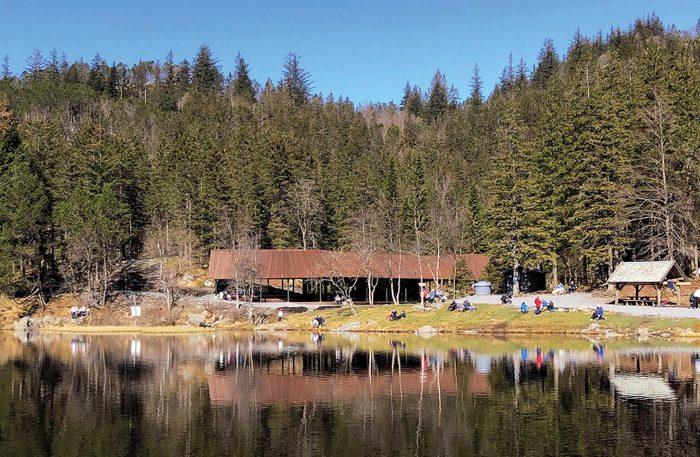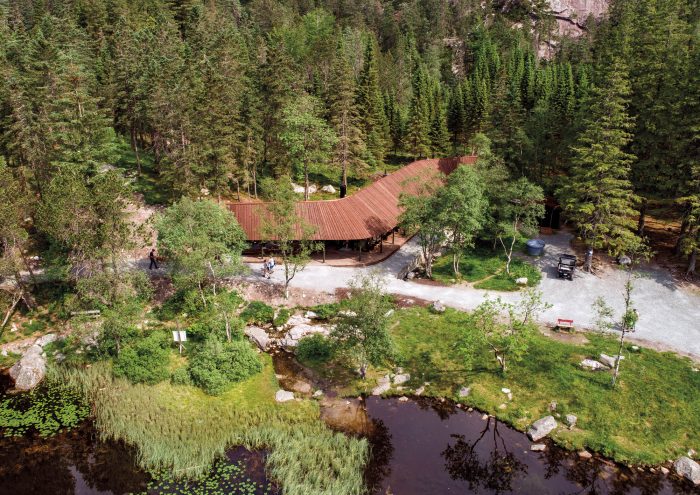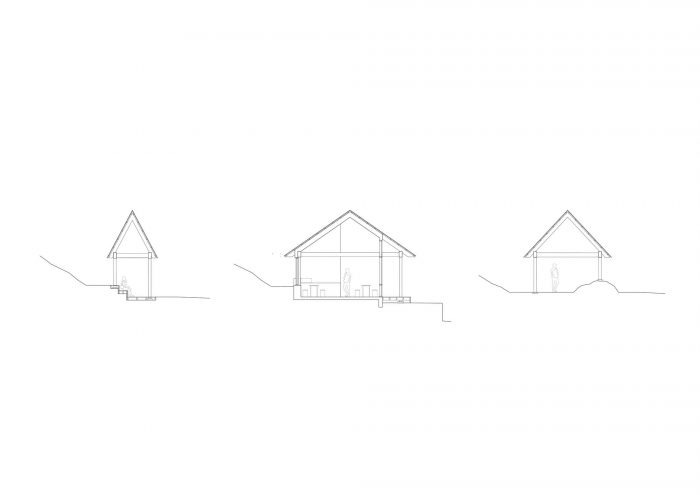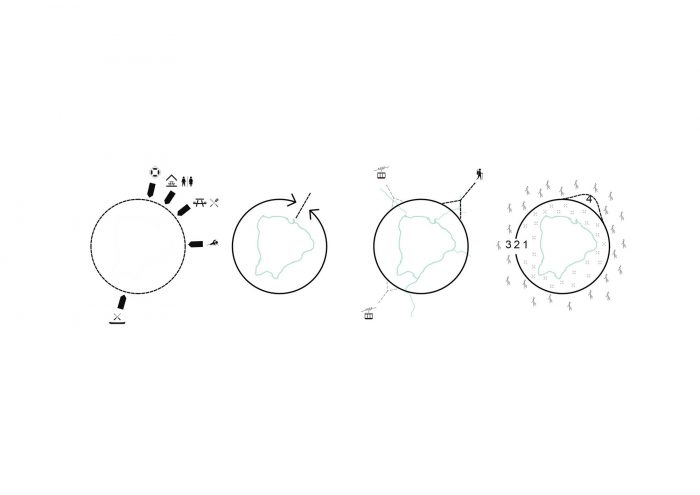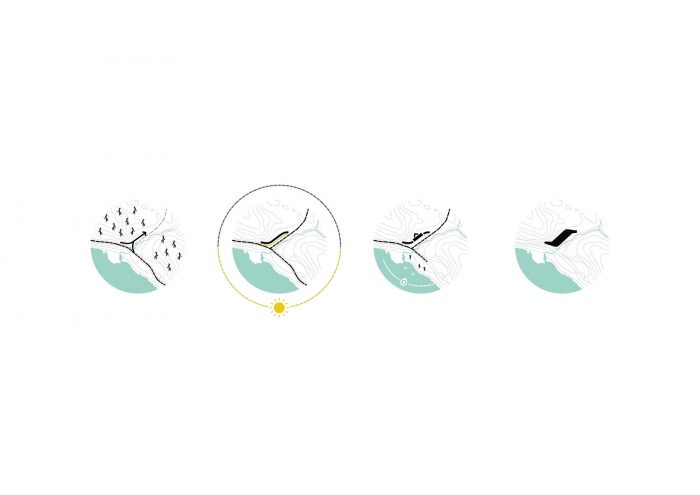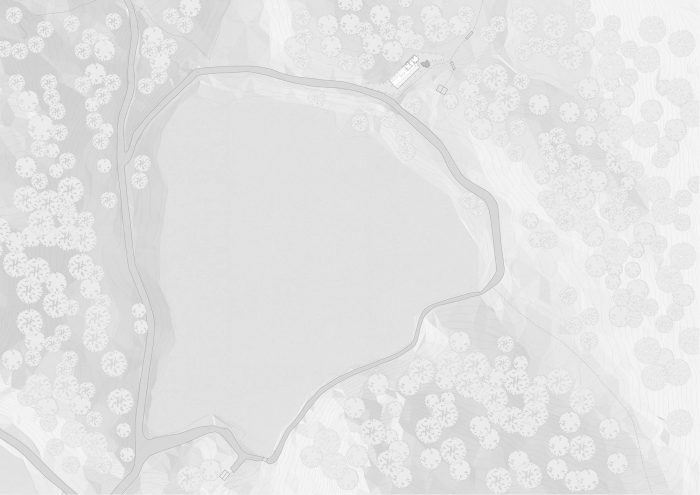SAAHA为卑尔根Fløyen山游客中心设计的竞赛获奖作品,旨在方便儿童、青年、徒步旅行者和游客使用这一热门山地景观。亭子以其起伏的运动,引导游客从湖边的碎石路到周围山间的步行道。
SAAHA’s winning competition design for a Visitor Center at Mt. Fløyen in Bergen, aims to facilitate the use of this popular mountain landscape for children, youth, hikers and tourists. With its undulating movement, the pavilion leads the visitor from the gravel road around the lake to the walkways through the surrounding mountains.
亭子位于受欢迎的远足区Fløyen的山湖边上。从市中心出发,乘坐8分钟的Fløyen缆车,再步行10分钟穿过森林,就可以到达这里。亭子位于湖边的碎石路旁。亭子位于一条小溪流过的现有空地上。 新的天然石材挡土墙被建造起来,以确保边缘的安全,并容纳鱼类的活动。
The pavilion is situated by the shore of a mountain lake in the popular hiking area Fløyen. It is reached from the city centre via an eight minute ride on the Fløyen funicular and a ten minute walk through the forest. The pavilion sits adjacent to the gravel road that touches the circumference of the lake. The pavilion is positioned in an existing clearing by a small stream running across the site. A new retaining wall in natural stone was built to secure the edge and accommodate the movement of fish.
波浪形的木质屋顶位于一个轻钢结构上,上面覆盖着一个小型的公共咖啡馆。延伸的屋顶也为开放时间以外的游客提供了庇护。它的设计有一个转折,把你带到森林里,旁边有一条小溪和一条远足道。亭子本身既是一个受欢迎的目的地,也是探索周围山脉前的自然休息场所。
The undulating timber roof rests on a lightweight steel structure covering a small public cafe. The extending roof also provides shelter for visitors outside of opening hours. It is designed with a twist that leads you into the forest next to a small stream and a hiking trail. The pavilion is both a popular destination in itself and a natural place to rest before exploring the surrounding mountains.
在一个已经被大量使用的自然区域建造一个新的目的地,需要在创造一个视觉存在,同时保护和融入周围的自然之间取得平衡。 考虑到这一点,建筑师希望亭子能够轻巧地接触地面,同时也要结合坚固的表面,以承受许多用户的磨损。因此,屋顶之后的木板路也被用来在凹凸不平的地形上做长椅。
Building a new destination in an already much used natural area, required a balance between creating a visual presence whilst protecting and blending in with the surrounding nature. With this in mind, the architects wanted the pavilion to touch the ground lightly while also incorporating robust surfaces that could take the wear and tear of the many users. The boardwalk following the roof is therefore also used to make benches in the uneven terrain.
为了满足在开放时间以外向公众开放的需求,大屋顶被设计为遮挡风雨的地方。 因此,该建筑从不 “封闭”,作为远足目的地非常受欢迎。木质屋顶覆层是在现场安装的,不需要进一步的维护,因为它在大自然的影响下会自然生锈。
In order to meet the demand of openness to the public outside of opening hours, the large roof was designed as a shelter from the elements. As a consequence, the building is never «closed» and is very popular as a hiking destination. The timber roof cladding was mounted on-site and needs no further maintenance as it is left to patina naturally under the influence of the elements.
客户需要一个实用的空间来经营一家小型咖啡馆,包括在Bergens的许多雨天提供室内服务的可能性。解决方案是设计一个开放的、紧凑的厨房,连接到一个木制的 “盒子”,里面有一个员工休息室、清洁设施、通风设备和一个公共休息室。
The client needed a practical space to run a small cafe, including the possibility for indoor serving on Bergens many rainy days. The solution was to design an open, compact kitchen connected to a wooden «box» containing a staff restroom, cleaning facilities, ventilation equipment and a public restroom.
咖啡馆本身采用高透明玻璃的铝制幕墙,而悬空的屋顶在温暖的月份提供了必要的防晒保护。 这使结构具有透视性,在夏季不会过热。
The cafe itself is glazed with an aluminium curtain wall of highly transparent glass, while the overhanging roof provides the required sun protection during the warmer months. This gives the structure a see-through quality without overheating in summer.
建筑师:SAAHA
面积:82 m²
年份:2020年
摄影:Vibeke Eikehaug
主管合伙人:Adnan Harambasic
项目负责人:Jacob Schroll
建筑师:Karen Austegard, Thor Olav Solbjør, Fergus Sørli
本地建筑师:Utmark Arkitektur AS
城市:Bergen
国家:挪威
Architects: SAAHA
Area: 82 m²
Year: 2020
Photographs: Vibeke Eikehaug
Partner In Charge:Adnan Harambasic
Project Leader:Jacob Schroll
Architect :Karen Austegard, Thor Olav Solbjør, Fergus Sørli
Local Architects:Utmark Arkitektur AS
City:Bergen
Country:Norway

